Ecosystems and Habitats Teaching Resources
Explore printable ecosystems worksheets, digital habitat activities and more for teaching this important element of the elementary and middle school science curriculum!
This collection of teacher resources was created by teachers to align with NGSS standards, providing you with everything you need to teach kids about biodiversity, habitats and more!
New to teaching about habitats and ecosystems in the primary classroom, or just looking for some fresh ways to engage your students on the topics? Read on for a primer from our teacher team, including a handy definitions for kids on each topic, plus a breakdown of the difference between these two important science terms.
What Is a Habitat? A Definition for Kids
Do you need a quick and easy way to explain the meaning of habitat to your students? Our teacher team has created a definition you can use in the classroom to do just that!
A habitat is a place where plants and animals live. It provides the things that they need to survive, like food, water and shelter.
5 Habitat Examples for Kids to Share in Your Classroom
This definition is a good starting point, but perhaps you're looking for a handy list of habitat examples you can share? We've got you covered with that too!
Please note that this list includes five of the planet's major habitats. Some scientists list as many as 16, however this list includes those our students are most likely to need to know about in primary school.
- Desert — The desert habitat is known for its dry and hot conditions, where animals such as the camel and plants such as cacti thrive. Some examples include the Gobi Desert in China and the Sahara Desert in Africa.
- Marine — Also known as the aquatic habitat, marine is larger of all habitats on the planet. Rivers, lakes, streams and, of course, the five oceans on planet Earth provide homes for a variety of marine animals live — from fish to whales to coral and much more.
- Polar — This habitat is found on the two ends of the earth, called the North and South Poles. Plants and animals that live in the polar habitat have adapted to its extreme cold temperatures.
- Forest – The forest habitat makes up nearly a third of the world's landmass. This habitat can be broken down into different types of forests, including the coniferous forests, coastal forests and tropical rainforests. The latter are known for being warm and very moist — just as the name implies, this habitat gets a lot of rain! The most famous of the world's rainforests is the Amazon which covers 2.6 million square miles.
- Grassland — One of the largest habitats in the world, grassland typically has moderate to warm weather and plenty of grass for animals to graze on.
What Is an Ecosystem? A Kid-Friendly Definition
We've covered the meaning of habitat, but what about ecosystem? Here's a definition from our teacher team to use in the classroom:
An ecosystem is a community of living organisms and nonliving things in a particular area. For example, an ecosystem can include plants, animals and microorganisms that are all living, as well as soil, water and sunlight, which are not.
The living and nonliving things in an ecosystem interact with each other and are interdependent.

Ecosystem vs. Habitat — What's the Difference?
These two science concepts are clearly interrelated, which can be confusing for students. So let's outline the differences.
Habitats
Kids can think of a habitat as a specific place where certain plants and animals live. A habitat is a home, and it's where those plants and animals have everything they need to survive — sort of like the things that students might find in the place where they live. There is shelter, food and water.
Ecosystems
On the other hand, it can be helpful for students to remember that an ecosystem is like a big, interconnected community of habitats.
An ecosystem also goes beyond just plant and animal life.
This larger system includes both living (plants and animals) and non-living (air, water) things. It also includes all the interactions and relationships between the living and non-living things within it.
- Plus Plan
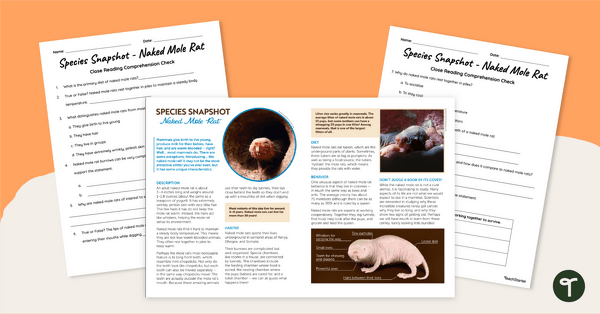
Naked Mole Rats – Comprehension Worksheet
Read and learn facts about the naked mole rat with a printable reading comprehension worksheet pack for 5th grade.
- Free Plan
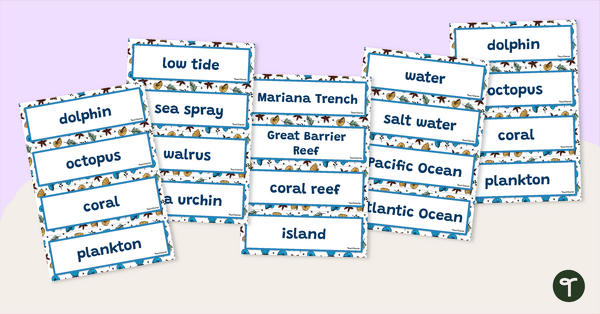
Ocean & Marine Word Wall Vocabulary
64 marine life word wall vocabulary cards.
- Plus Plan
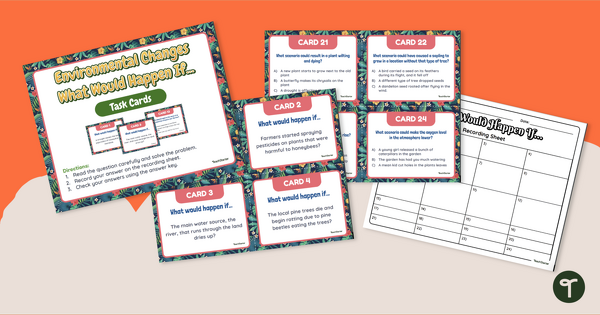
What Could Happen? Environmental Change Task Cards
Predict and identify the effects of environmental change on plants and animals with a set of printable science task cards.
- Plus Plan
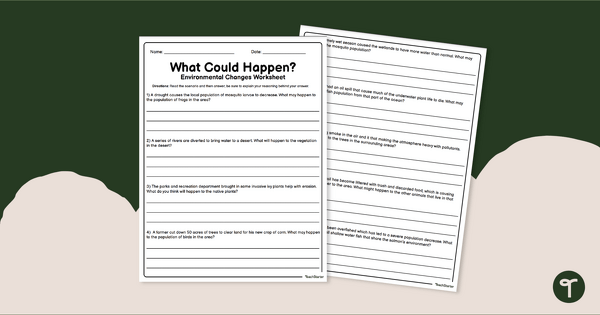
What Could Happen? - Environmental Changes Worksheet
Explore the effects of environmental change on plants and animals with a printable science worksheet.
- Plus Plan

Who Would Win? - Plant Adaptation Interactive Game
Identify plants and plant adaptations that allow for survival in different environments with an exciting “Who Would Win?” showdown game!
- Free Plan
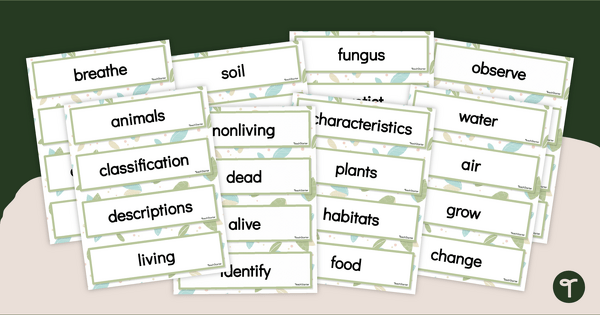
Living and Non-Living Things - Word Wall Vocabulary
Discover the world of living and nonliving things, starting with a printable vocabulary word wall..
- Plus Plan
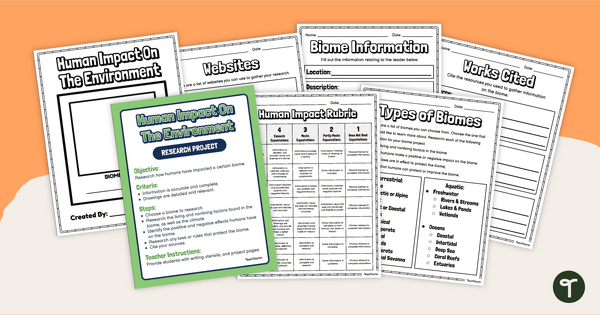
Human Impact on the Environment-Research Project
Uncover how humans positively and negatively impact the different biomes around the world with a guided research project.
- Plus Plan

Protecting Native Plants and Animals – Comprehension Worksheets
Build comprehension skills and learn about human impact on ecosystems with a reading passage and worksheets.
- Plus Plan
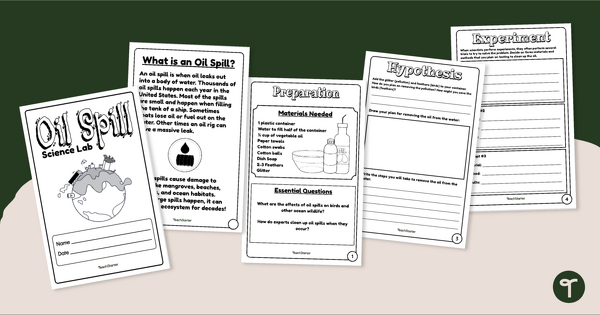
Oil Spill Experiment
Investigate water pollution and discover the effects of oil spills on wildlife with a hands-on oil spill experiment
- Plus Plan

Animals and Their Habitats- Interactive Activity
Help a lost polar bear (and his friends) return to the correct habitat with a Google Slides interactive activity.
- Plus Plan

Animals and Their Habitats - Sorting Activity
Discover the habitats that are home to Earth’s wildlife with a printable animal habitat sorting activity.
- Plus Plan
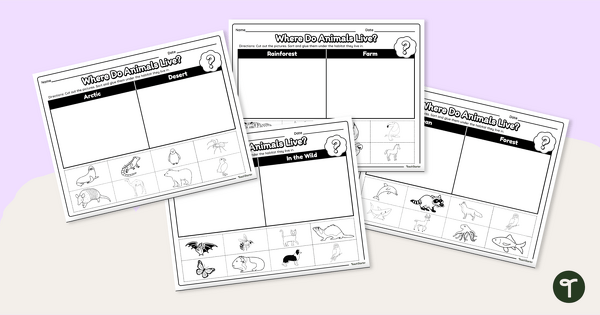
Animals and Their Habitats - Cut and Match Worksheets
Match animals with their habitats with a set of cut and paste worksheets.
- Plus Plan

World Biomes Map
Locate and explore the different biomes of the world with this engaging classroom poster.
- Plus Plan
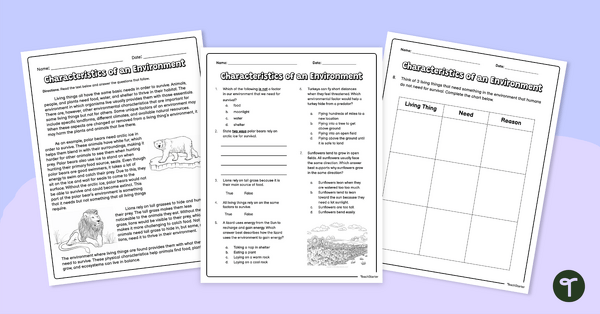
Characteristics of an Environment – Worksheet
Enhance your students’ comprehension and science skills by learning about the physical characteristics of different environments and how they support populations within an ecosystem.
- Plus Plan
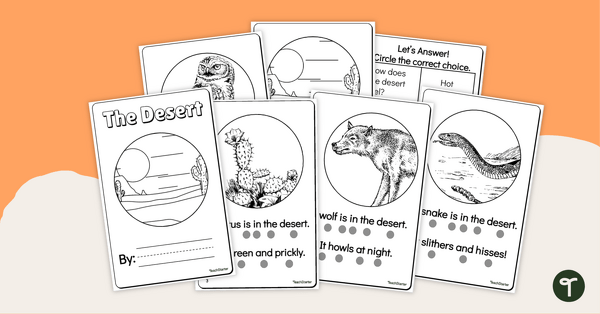
Desert Mini-Book - Printable Reader
Engage your students and inspire them to read and learn about plants and animals in the desert with a printable book for 2nd grade.
- Plus Plan
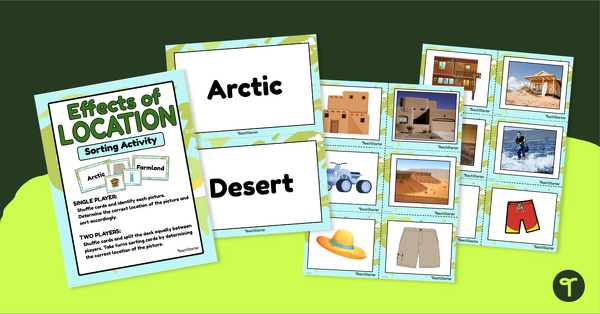
Effects of Physical Location Sort
Help children learn how the environment affects those that live in a specific area with a sorting activity.
- Plus Plan

Changes to the Environment Worksheet
Learn about environmental changes and how they affect living things with this worksheet.
- Plus Plan
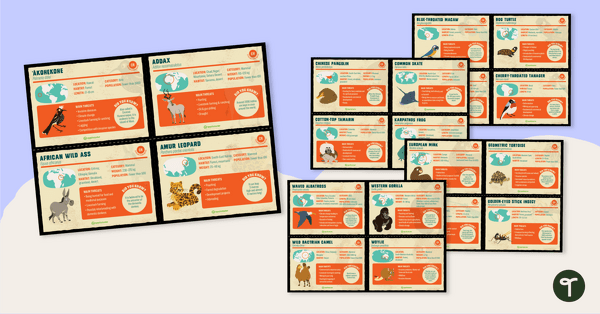
Endangered Species Fact Cards
Explore 64 species and subspecies that are on the critically endangered list with this set of fact cards.
- Plus Plan
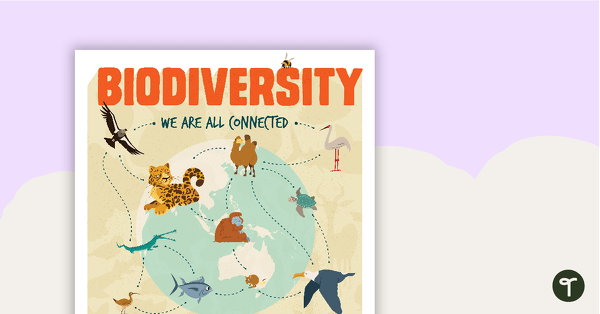
Biodiversity Poster
A poster to help your students explore the topic of biodiversity.
- Plus Plan
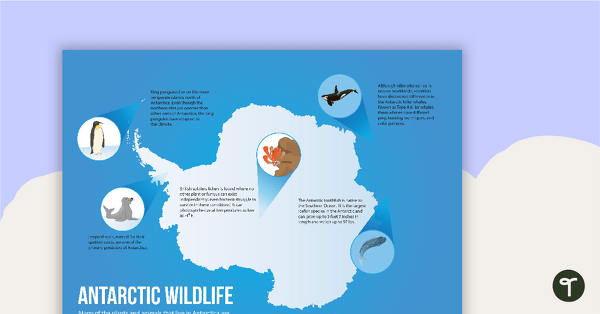
Antarctic Wildlife Poster
A poster highlighting some of the main wildlife found in Antarctica.
- Plus Plan
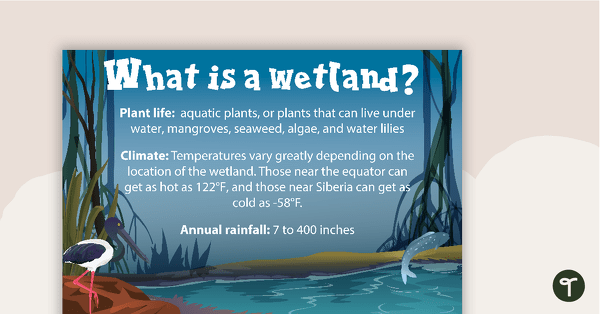
What is a Wetland? Poster
A poster with information about the plant life, climate, and annual rainfall that characterize a wetland environment.
- Plus Plan
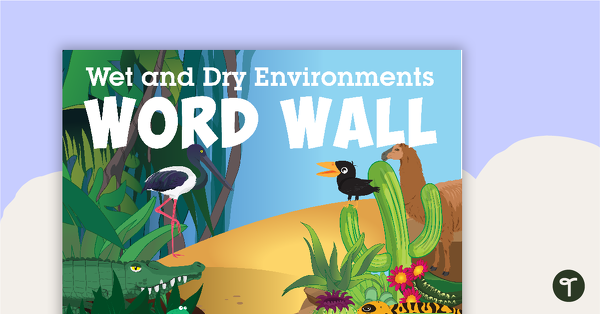
Wet and Dry Environments Word Wall Vocabulary
48 wet and dry environment vocabulary word wall cards.
- Plus Plan
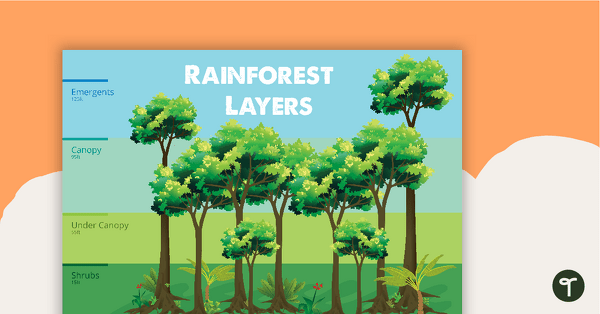
Rainforest Layers - Poster
A poster that explains the layers of a rainforest.
- Plus Plan
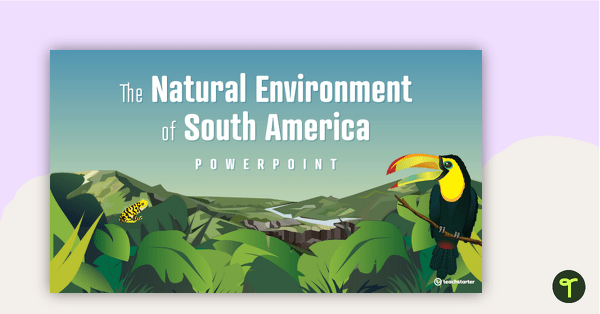
The Natural Environment of South America PowerPoint
A 17-slide editable PowerPoint template to use when introducing students to the climate, vegetation, and animals of South America.
- Free Plan
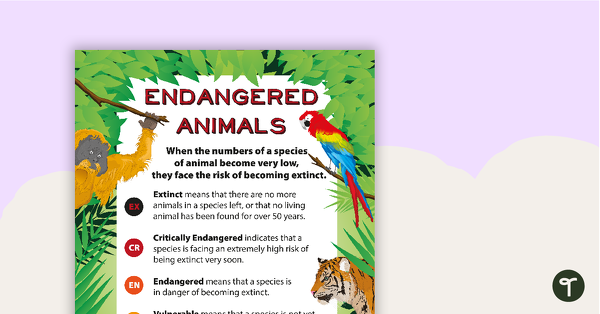
Endangered Animals Classification Poster
Explore endangered animal classifications with this informative classroom poster.
- Plus Plan
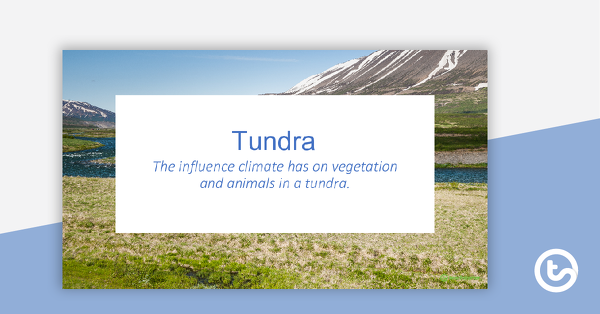
Tundra PowerPoint
An 11-slide editable PowerPoint to use in the classroom when learning about tundras.
- Plus Plan
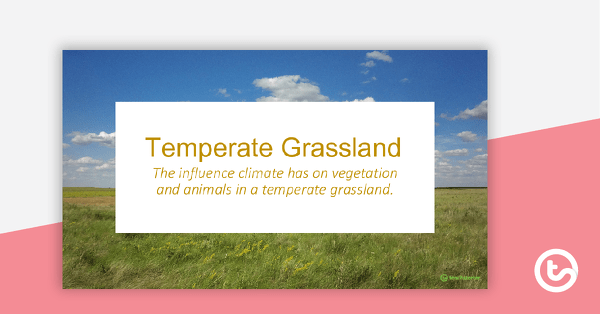
Temperate Grassland PowerPoint
An 11-slide editable PowerPoint to use in the classroom when learning about temperate grasslands.
- Plus Plan
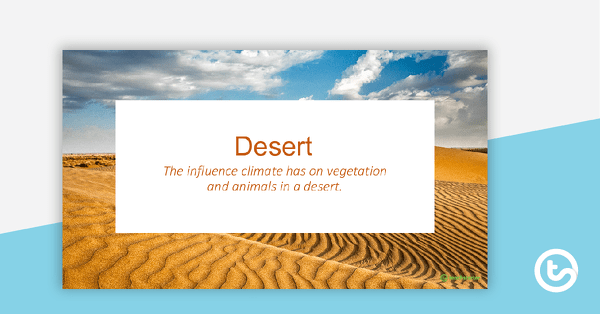
Desert PowerPoint
An 11-slide editable PowerPoint to use in the classroom when learning about deserts.
- Plus Plan
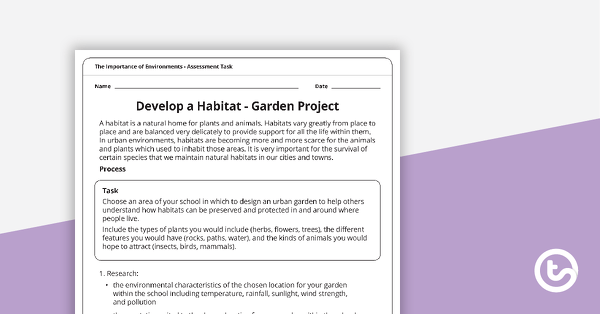
Develop a Habitat - Garden Project
A project-based assessment task for students to demonstrate their understanding of how habitats can be preserved and protected in and around where people live.
- Plus Plan
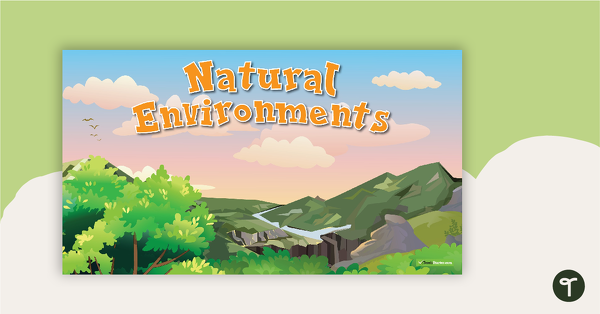
Natural Environments - PowerPoint
A Natural Environments-themed PowerPoint to add some color and design to your classroom PowerPoint presentations.
- Plus Plan
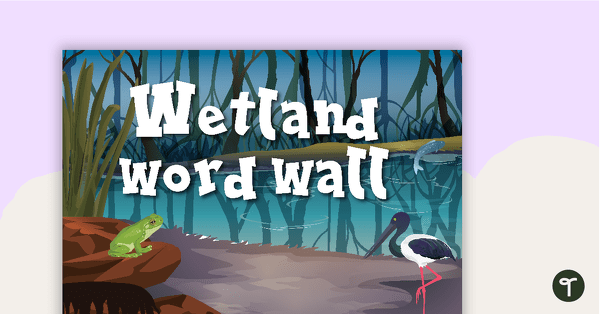
Wetland Word Wall Vocabulary
A set of wetland-related vocabulary word wall cards.
- Plus Plan
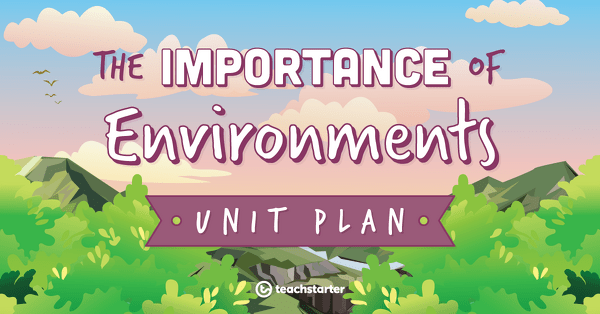
The Importance of Environments Unit Plan
This Science unit addresses the importance of ecosystems to plants and animals and the ways in which they can be protected.
- Ecosystems and Habitats Worksheets
- Ecosystems and Habitats for Kindergarten
- Ecosystems and Habitats for 1st Grade
- Ecosystems and Habitats for 2nd Grade
- Ecosystems and Habitats for 3rd Grade
- Ecosystems and Habitats for 4th Grade
- Ecosystems and Habitats for 5th Grade
- Ecosystems and Habitats for 6th Grade